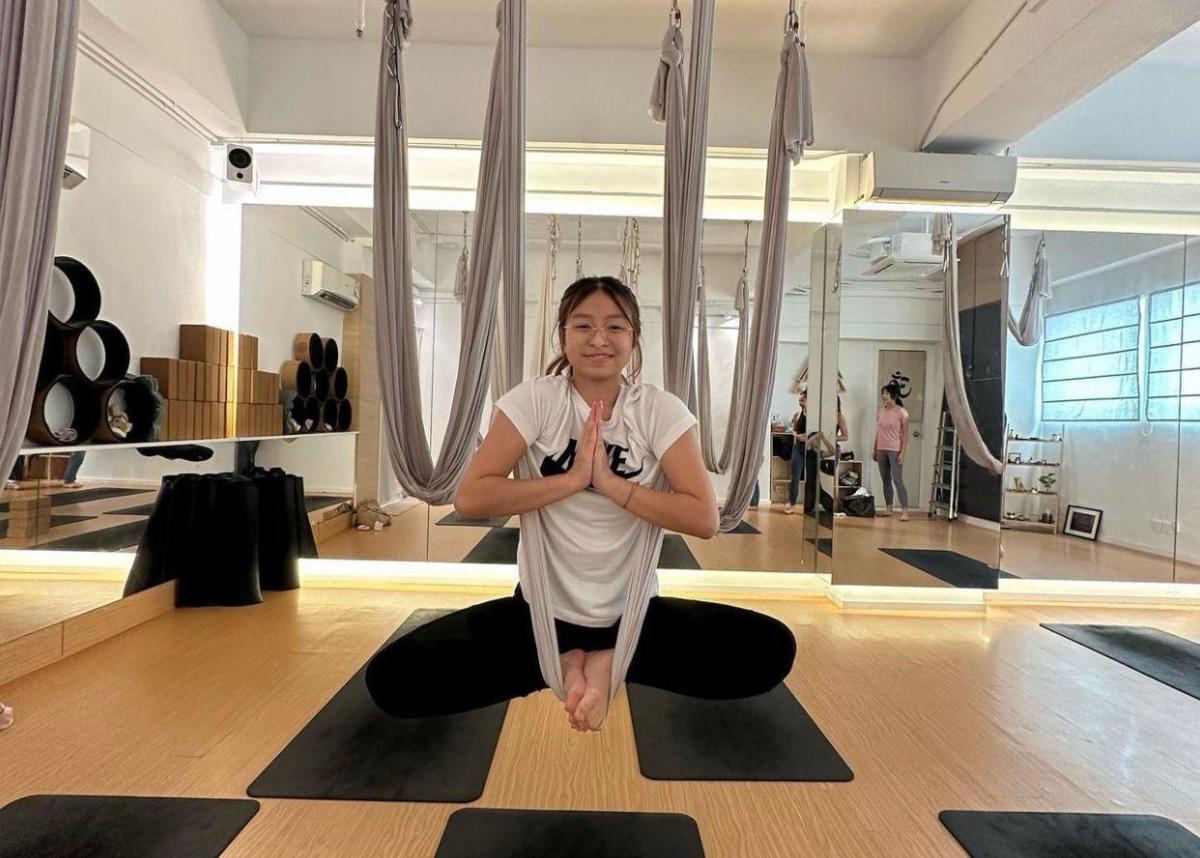An Asian man with short, tousled, curly hair walks around the gallery with a short stature, touching machines. Nam June Paik (1932-2006) held the first video art exhibition at the Parnas Gallery in Wuppertal, Germany in 1963. The German local media criticized it harshly, saying, “The young Korean artist tried to shock, but the result was exhausting.” However, he later became a world-renowned artist from Korea.
The documentary ‘Nam June Paik: The Moon is the Oldest Television’, which shows how the human Nam June Paik survived as an artist, was directed by Korean-American director Amanda Kim. The Ulsan Museum of Art holds the film and held a preview on the 29th of last month at the ECC Art House Momo Hall 1 at Ewha Womans University in Seoul. This is the first time a documentary about Nam June Paik has been produced.
Sections of the human Nam June Paik
 A still cut from ‘Nam June Paik: The Moon is the Oldest Television’. Photo: Courtesy of Ulsan Museum of Art
A still cut from ‘Nam June Paik: The Moon is the Oldest Television’. Photo: Courtesy of Ulsan Museum of ArtThe film focused on highlighting Nam June Paik’s life rather than his deep artistic context. It consists of a video of Nam June Paik during his lifetime, his writings, and interviews with artists who remember him. Nam June Paik’s writing was narrated and read by actor Steven Yeun of the movie ‘Minari’. Interviews with Nam June Paik’s collaborators, cellists Charlotte Moorman and Merc Cunningham, his wife Shigeko Kubota, and eldest nephew Ken Hakuda are also featured.
The most interesting thing is, of course, the appearance of Nam June Paik during his lifetime. When he held his first exhibition, he showed a nervous expression while concentrating, he showed a bit of bitterness after hearing the harsh criticism from the media, but he didn’t care, and he got an epiphany while contemplating and called a colleague at dawn. Sections of his life as he progressed are vividly unfolded.
● John Cage and the TV Ministry
 zoom inA still cut from ‘Nam June Paik: The Moon is the Oldest Television’. Photo: Courtesy of Ulsan Museum of Art
zoom inA still cut from ‘Nam June Paik: The Moon is the Oldest Television’. Photo: Courtesy of Ulsan Museum of ArtNam June Paik, who moved to Germany from Japan, saw a performance by musicians John Cage and David Tudor in 1957 and said, “I became a completely different person” and “gave me the courage to be free” from Cage.
Nam June Paik applies that freedom to television. If Cage broke the rules of music, Nam June Paik breaks the rules of television, which transmits images unilaterally. He distorts the screen by holding a magnet to the cathode ray tube, opens the television box and modifies it so that the audience can control the video.
Nam June Paik’s experiment led to New York, USA. Here, you can see a video of Charlotte Moorman’s performance of ‘TV Bra for a Living Sculpture’ (1969), as well as manipulating ‘Robot K-456’ to walk on the street.
There is also an anecdote about Nam June Paik, who suffered from economic difficulties all his life, struggling to get support from the Rockefeller Foundation of the United States, and how he was able to save his works and records thanks to his wife on a rainy day when he lived in an old house that was leaking. Nam June Paik said, “If he had lost everything at this time, he would have committed suicide.”
According to the film, it was the ‘TV Buddha’ series that started in 1974 that saved him from poverty. Shigeko is worried because she has nothing to eat, but Nam June Paik suddenly spends the remaining money and buys a Buddha statue. Nam June Paik placed a statue of Buddha in front of a television and made a work of Buddha looking at himself through a cathode ray tube, which is now owned by art museums around the world. He can also be seen returning to Korea in 1984, 34 years after leaving Korea in 1950. A complicated expression is read on his face as he wears his hanbok, plays the piano with his older sister, and visits the graves of his parents. A date for the public release of the film is undecided.
Reporter Min Kim [email protected]


